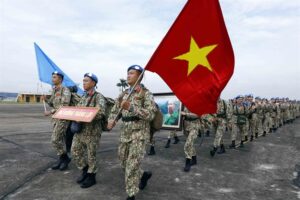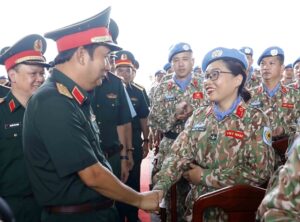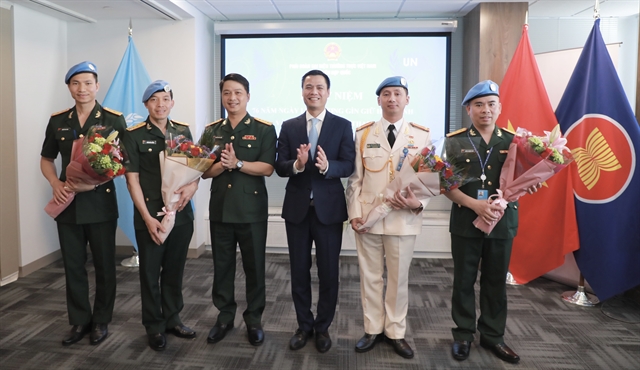HÀ NỘI: Việt Nam’s journey to develop the Việt Nam Department of Peacekeeping Operations into a peacekeeping training centre with regional and international prominence is taking shape and yielding positive results over the past ten years.
This progress is demonstrated by the creation of courses with international participation, where Việt Nam shares its experiences on a global stage.
Colonel Mạc Đức Trọng, Deputy Director of the Ministry of National Defence’s Việt Nam Department of Peacekeeping Operations spoke with Vietnam News Agency on the occasion of the 10th anniversary of the country’s first participation in UN peacekeeping operations (May 27, 2014 – 2024).
On May 27, 2014, the Ministry of National Defence held a ceremony to establish the Việt Nam Peacekeeping Centre, chaired by the late General Phùng Quang Thanh, then Minister of National Defence. In June of the same year, the first two military officers were sent to the United Nations Peacekeeping Mission in South Sudan.
To meet the increasingly demanding requirements of its mission, in November 2017, the Việt Nam Peacekeeping Centre was reorganised into the Việt Nam Department of Peacekeeping Operations.
In January 2018, the Inter-Agency Task Force was transferred from the Ministry of Foreign Affairs to the Ministry of National Defence to ensure focused and unified leadership in carrying out its assigned tasks.
Over the past ten years, more than 800 Vietnamese peacekeepers have been deployed in South Sudan, the Central African Republic, the Abyei Area and the Department of Peace Operations at the UN Headquarters in New York.
There are three key milestones in the past ten years: the deployment of the first two individual officers in 2014, the deployment of the first Level-2 field hospital in 2018 and the deployment of the first Engineering Unit in 2022.
For individual commissions, Việt Nam has achieved the highest level of outstanding officers’ performance of over 30 per cent, a high rate compared to the average of other countries participating in peacekeeping missions.
In terms of unit types, the country has successfully deployed a Level-2 field hospital in very challenging areas with insufficient infrastructure, while meeting the international standards required for professional and technical competence.
Four years after that deployment, Việt Nam made another big step by deploying the Engineering Unit with a force of 184 officers and personnel, along with bringing in a large amount of equipment, over 2,200 tonnes, including nearly 150 vehicles.
Deploying such a number of personnel and equipment is very challenging. In the Abyei mission, many countries didn’t complete the deployment of a unit even after two years of operation, with their equipment yet to arrive. In contrast, we completed our entire deployment within a month,” he said.
With the field hospital, despite the difficult conditions in South Sudan, Việt Nam’s work meant that between 1,200 and 2,000 patients a year, instead of the previous 200-300 patients, could get treatment.
“For the Engineering Unit in Abyei, the UNISFA Mission Commander, the UN Deputy Secretary-General, and other officials have all praised the unit for exceeding the UN’s expectations during their visits,” he said.
“Not only did we complete our tasks very well and quickly, meeting all the UN’s requirements in challenging situations and conditions, but we also conducted humanitarian work, built drainage systems, constructed schools and supported the local population. These efforts went beyond the UN’s expectations, leaving a significant impact and earning recognition for transforming the mission area and benefiting the local community.”
Trọng recalled his time in 2022 when he was the leader of Việt Nam’s Engineering Unit No1 participating in the United Nations peacekeeping mission at UNISFA in the Abyei area.


